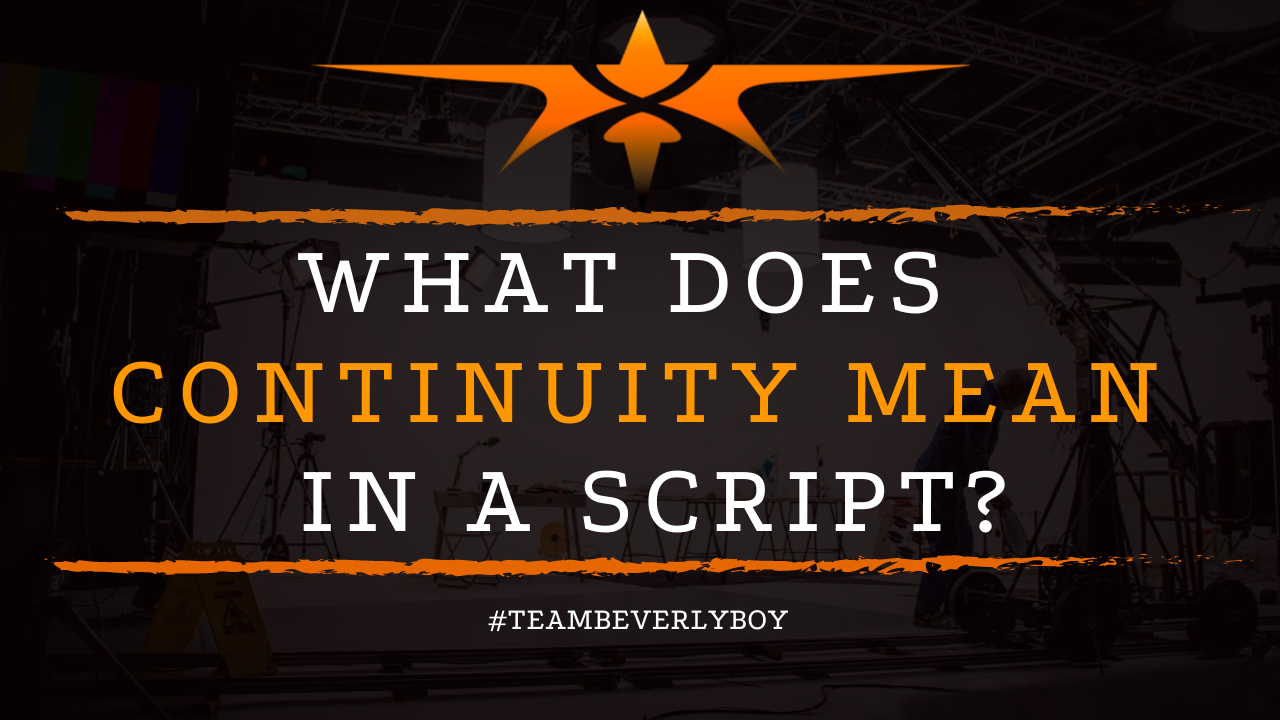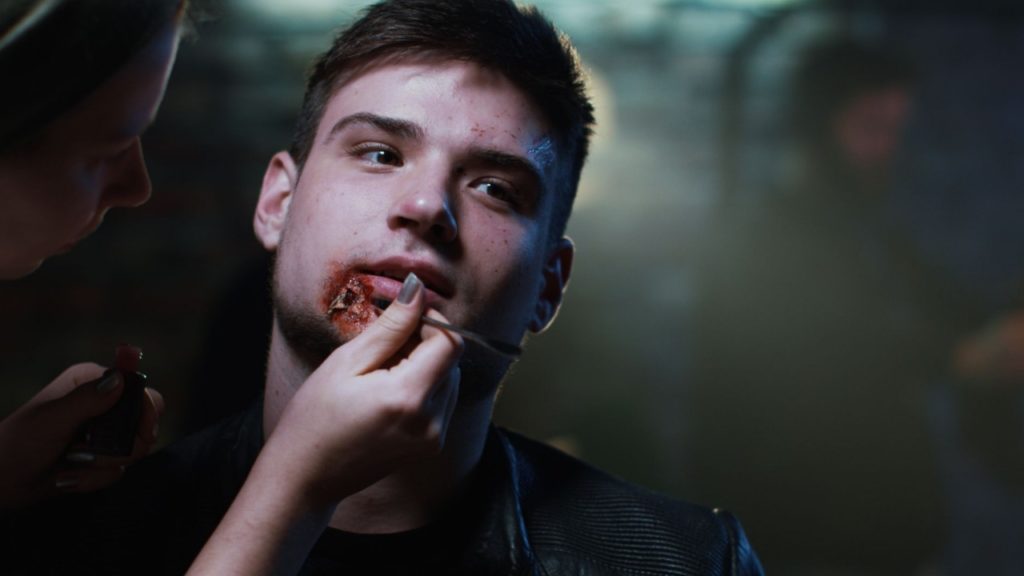
What Does Continuity Mean in a Script?
Continuity errors are some of the most common mistakes to occur when producing a film. But they’re also some of the simplest to prevent. Especially when a continuity script is incorporated into the motion picture production process. The script supervisor, responsible for script continuity, has the power to directly influence the continuity of the film, providing detailed records of what’s been shot for each scene. As well as information regarding wardrobe, props, set dressing, hair and other elements. So what does continuity mean in a script?

What Does Continuity Mean in a Script?
A continuity script represents a unique document which outlines the complete action, scenes, and underlying elements that have taken place in the order in which they occur within the story are to be shown on the screen.
The continuity script will include key details for the editor in regards to features found in the film, sound effects that are used, unique accents that are to be recognized from different actors. And even the emotions or underlying descriptive elements that pertain to actors within the scene.
The script supervisor is responsible for preparing the continuity breakdown during pre-production to help the editor and other members of the film crew to maintain continuity of the film throughout production.
Key Details
The continuity breakdown documents the cast, their wardrobe, unique props that are used, and key details regarding the script timing.
Throughout production, the script supervisor will continue to embark on steps that will help the crew to maintain continuity of the film through eye-line matches, action matching. And by keeping detailed notes and photographic recordings of props, costumes, action.
As well as other key areas of the film. The script supervisor further notes camera and les data, slate and scene data, and other pertinent information about the day’s filming to deliver to the editor and other post-production crew members.
Why is Continuity Important?
As we look to further answer the question, “What does continuity mean in a script?” We must also deliver key information as to what it is that makes continuity so important to a script.
Continuity is important because it reduces instances in which errors to the continuity or lapses in the continuous flow of the story are recognized by the audience.
The purpose of continuity is to provide a continuous film in which, even though there are edits and transitions throughout, the dialogue, costumes, hair, makeup and all other elements associated with the scene or script appear to be in line with prior views.
What Does a Lapse in Continuity or a Mistake Look Like?
What does a mistake in continuity look like? If there is a break in continuity the audience will almost certainly realize it rather quickly. The goal of continuity is to make the filmmaking techniques that are used to produce the movie invisible and unnoticeable for the audience.
Thus, the filmmaker does not want the audience to recognize things like transitions, camera changes, adjustments to eye line, or other styles or types of filmmaking magic.
Noticeable Changes
Thus, when we answer, “What does continuity mean in a script?” It’s important to examine lapses in continuity and what a mistake might look like. For instance, a lapse in continuity or a mistake in continuity might look like a change in the consistency of the scene.
We’ve all seen this type of error occur in a film, it can be recognized by noticeable changes in a scene as it transitions. For example, a glass might be half full one minute and entirely full the next. Or entirely empty the next without any noticeable means of having been emptied or filled.
Or you might notice that an actor’s hair is wet one minute and completely dry the next. These “mistakes” break the continuous flow of the film thus breaking continuity.
How Do Continuity Errors Occur?

Continuity errors are bound to occur. Think about it. When a film is being shot there is a Director that is requesting an actor or group of actors to perform the same scene over and over.
The shooting is taking place time and again as elements of the scene are captured from various angles. The scene is played out over and over again by the actors while the cameras roll. With each shoot, there is risk for continuity error.
As the actors are expected to make the exact same movements, looking in the exact same direction, speaking the exact same lines the same way at the same time. All of these instances have a potential risk for continuity error. As actors get tired, they may make mistakes.
When the camera crew gets tired, mistakes are more likely. As the script supervisor tires, there is potential for him to overlook mistakes, too. This is how breaks in continuity occur and, although they are not welcomed, they do happen.
Spotting Continuity Errors in Film
Part of defining and answering the question, “What does continuity mean in a script?” is in helping to explain how differences or errors in continuity can be spotted in films. Locating differences in continuity or potential discrepancies is an incredibly important job.
The continuity script seeks to reduce any presence of continuity error or mistakes. But script supervisors are humans and thus are not perfect. Therefore, there is always some level of potential risk for continuity error to occur.
Minimal Discrepancies
Oftentimes, continuity errors are the result of minimal discrepancies in motion, color, or some other element of the filmmaking process. Continuity errors can also occur as a result of some deviation from the original script.
This is why it’s so important to have a continuity script that delineates the activities. And what’s happening with each shot, scene, and section.
The continuity report, produced by the script supervisor, seeks to maintain continuity despite adjustments or adaptations that are made throughout the filming of the various scenes and shots within the script.
As the audience, you might have spotted mistakes or lapses in continuity in any of the following past film situations:
The Wizard of Oz
During a scene in which Dorothy and the Scarecrow are fighting the trees and apples are being thrown. There is a shot where Dorothy is wearing ruby slippers and then the next shot she’s wearing black shoes.
This lapse in continuity occurred because Dorothy would normally wear the black shoes whenever a scene would be filmed without her feet in view. Because these were more comfortable than the “Ruby” slippers.
However, a mistake must have been made in capturing the frame and someone forgot that her feet were in view.
Batman
In the original film Jack Nicholson who played the character of the Joker would have several scenes in which he had rubbed off some of his makeup to reveal his skin beneath. But the patch of missing makeup varied in shape, size, and location from scene to scene.
This was purely a matter of having not taken a photo of the specific image to recreate for the following shots.
Rocky Balboa
The character, Marie, is wearing a necklace during a conversation that takes place outside of her home with Rocky. However, the necklace would appear, disappear, and reappear several times as the conversation played out back and forth between the two.
The Takeaway
So, what does continuity mean in a script? It means continuous. So as not to lose the flow of the story while avoiding tiny adjustments in details related to motion, location, makeup, costume, or other elements. As they may change during the course of filming.
Mistakes in continuity may or may not be spotted by an audience. Although you can bet the more obvious the mistake or the more in-tuned your audience, the more likely a lapse in continuity is to be recognized and called out.


